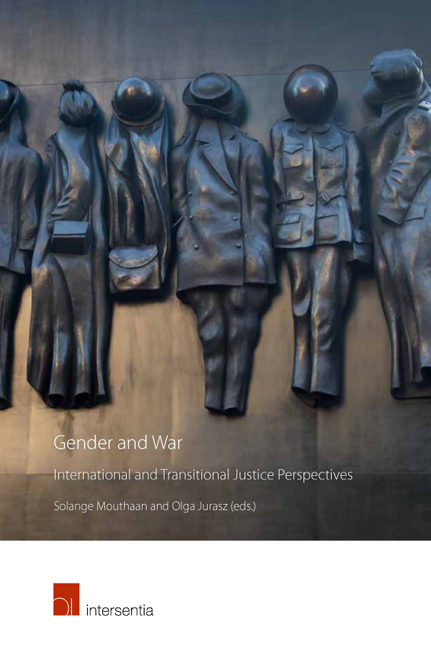Book contents
- Frontmatter
- Contents
- List of Cases
- List of Abbreviations
- List of Contributors
- Introduction
- PART I WOMEN'S INVOLVEMENT IN ARMED CONFLICT
- How and Why Women Participate in Armed Conflict: A Population-Level Quantitative Model
- Female Perpetrators in the Former Yugoslav Republic and Rwanda: Disrupting Common Understandings
- Female War Crime Perpetrators in Bosnia and Herzegovina
- PART II MEN AND CHILDREN'S EXPERIENCES OF ARMED CONFLICT
- PART III GENDERED EXPERIENCES OF INTERNATIONAL CRIMINAL JUSTICE
- PART IV GENDERED EXPERIENCES OF TRANSITIONAL JUSTICE
- PART V CONCLUSIONS
- About the Editors
Female Perpetrators in the Former Yugoslav Republic and Rwanda: Disrupting Common Understandings
from PART I - WOMEN'S INVOLVEMENT IN ARMED CONFLICT
Published online by Cambridge University Press: 30 March 2019
- Frontmatter
- Contents
- List of Cases
- List of Abbreviations
- List of Contributors
- Introduction
- PART I WOMEN'S INVOLVEMENT IN ARMED CONFLICT
- How and Why Women Participate in Armed Conflict: A Population-Level Quantitative Model
- Female Perpetrators in the Former Yugoslav Republic and Rwanda: Disrupting Common Understandings
- Female War Crime Perpetrators in Bosnia and Herzegovina
- PART II MEN AND CHILDREN'S EXPERIENCES OF ARMED CONFLICT
- PART III GENDERED EXPERIENCES OF INTERNATIONAL CRIMINAL JUSTICE
- PART IV GENDERED EXPERIENCES OF TRANSITIONAL JUSTICE
- PART V CONCLUSIONS
- About the Editors
Summary
INTRODUCTION
Female perpetrators do not feature prominently in the mainstream narratives surrounding the armed conflicts in the Former Yugoslav Republic (FYR) and Rwanda. Women's involvement in both of these conflicts has been primarily relegated to that of victims of sexual violence. This particular understanding of women's roles in armed conflict was perpetuated and reaffirmed through Western feminist interventions into international criminal law in the 1990s, which focused on sexual violence against women, and was made visible through the work of the International Criminal Tribunal for the Former Yugoslavia (ICTY) and the International Criminal Tribunal for Rwanda (ICTR). The lack of attention afforded by the international media to the range of women's activities in armed conflict further contributed to this limited account. However, women were documented to have been involved in the hostilities in the FYR and Rwanda. Women were accused of murder, torture and sexual violence. They participated in crimes against humanity, war crimes and genocide. Some women were in positions of leadership which granted them the ability to use their status to affect great harm. Other women, who were not in particular positions of power, still significantly contributed to the violence of war. Despite this information, the existence of women who actively took part in the hostilities is not evident in the mainstream narratives around the conflicts or in the jurisprudence of the Tribunals: Biljana Plavšić was the only woman tried by the ICTY and Pauline Nyiramasuhuko was the only woman brought before the ICTR. Women were also understood to have contributed to the violence of each armed conflict, evidenced by their prosecutions locally; however, knowledge regarding the participation of female perpetrators has not influenced mainstream understandings of women in armed conflict.
The reason it is beneficial to engage with the experiences of female perpetrators in the conflicts in the FYR and Rwanda is twofold. First, the existence of female perpetrators leads to questions about the system of international criminal law (ICL). The focus on these particular conflicts ‘narratives has predominantly developed around sexual violence against women and the loss of life or brutality of the violence perpetrated by men.
- Type
- Chapter
- Information
- Gender and WarInternational and Transitional Justice Perspectives, pp. 41 - 64Publisher: IntersentiaPrint publication year: 2019
- 1
- Cited by

